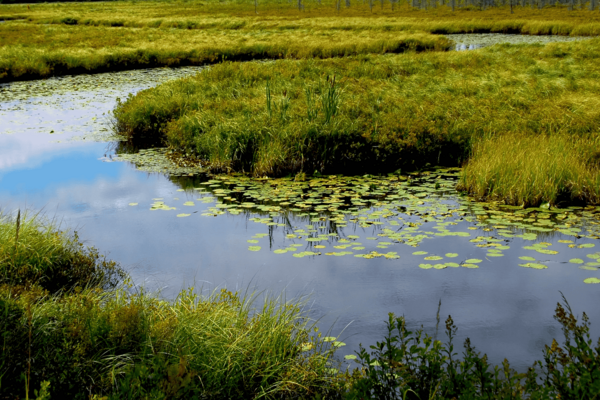
Measuring biodiversity through listening
A Waterloo co-op student is using AI to assess the impact of land use on biodiversity with grasshopper song

A Waterloo co-op student is using AI to assess the impact of land use on biodiversity with grasshopper song
By Sarah Fullerton Faculty of ScienceFrom working for a clean energy incubator in Uganda to analyzing sales data in Munich, and monitoring biodiversity in Germany’s Black Forest, Samantha Kremer's co-op experiences have been nothing short of extraordinary.
 Originally from Alberta, Kremer was drawn to the University of Waterloo for its renowned co-op program, which she saw as an ideal way to gain practical experience while earning her degree. Waterloo has the largest co-op program at a research-intensive university in the world with more than 70 per cent of students gaining up to two years of employment experience during their studies.
Originally from Alberta, Kremer was drawn to the University of Waterloo for its renowned co-op program, which she saw as an ideal way to gain practical experience while earning her degree. Waterloo has the largest co-op program at a research-intensive university in the world with more than 70 per cent of students gaining up to two years of employment experience during their studies.
As a fourth-year Honours Science and Business student specializing in biology, Kremer’s program led her to complete co-op terms not just in Canada but also overseas in Uganda, and even more recently, in Germany.
Kremer’s co-op journey in Munich, Germany began in January 2024 at Hoffmann Group SE, one of Europe’s largest tool manufacturers. At Hoffmann, Kremer learned how to translate complex data into actionable insights — an essential skill she brought to her latest co-op work term in the Faculty of Biology at Albert Ludwigs Universität Freiburg.
As an eco-acoustics and land use research intern, Kremer dove into her passion for science and biology, using eco-acoustics to monitor the biodiversity in grassland ecosystems. By training a machine learning classifier to recognize grasshopper and cricket sounds, Kremer is contributing to the development of an AI model that will allow scientists to quickly disentangle sound data and use the information as a biodiversity indicator in varying land-use intensities.
"It's like a Shazam for grasshoppers," she explains.
Recording devices are set up in various fields over several months to collect sound data. Kremer sorts and annotates this data, which is used in training an algorithm to extract patterns and characteristics to identify sounds of interest on its own.
 While using AI and machine learning tools were new to her, Kremer is grateful for the support she received from her supervisors. "Gaining experience in eco-acoustics and AI has been essential to my growth as a biologist," she says. "I was not aware of this niche yet important area of study, and I would like to one day continue this type of work in a marine environment."
While using AI and machine learning tools were new to her, Kremer is grateful for the support she received from her supervisors. "Gaining experience in eco-acoustics and AI has been essential to my growth as a biologist," she says. "I was not aware of this niche yet important area of study, and I would like to one day continue this type of work in a marine environment."
Receiving this opportunity through the DAAD German Academic Exchange Service RISE Scholarship program, Kremer urges incoming co-op students to embrace and explore all the opportunities available to them. “Co-op opens your eyes to so many opportunities that you wouldn’t have known about before, just try it and you’ll find your way.” she adds.
This fall, Kremer will return to the University of Waterloo to complete her final terms of study and thesis before graduating with unparalleled international experience and a clear vision for her future.

Read more
Waterloo co-op student applies machine learning methods to develop tools to forecast drought in Kenya

Read more
Here are the people and events behind some of this year’s most compelling Waterloo stories

Read more
Waterloo research is leading the fight against an invasive plant threatening Ontario wetlands
The University of Waterloo acknowledges that much of our work takes place on the traditional territory of the Neutral, Anishinaabeg, and Haudenosaunee peoples. Our main campus is situated on the Haldimand Tract, the land granted to the Six Nations that includes six miles on each side of the Grand River. Our active work toward reconciliation takes place across our campuses through research, learning, teaching, and community building, and is co-ordinated within the Office of Indigenous Relations.